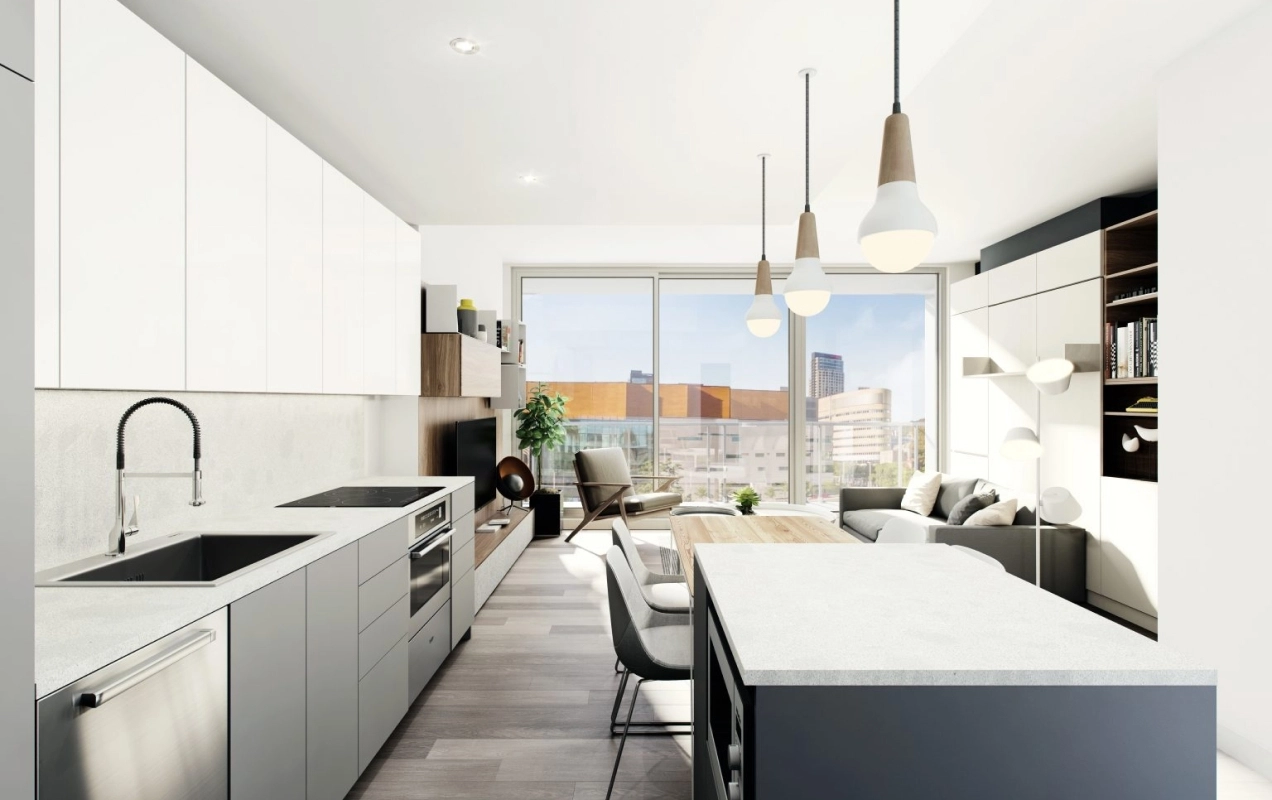As a real estate developer, we want to share our knowledge and expertise to support aspiring homeowners and take a step toward financial independence. That's why we created this guide, which is intended primarily as a reminder and a reference document to demystify the purchase process of a new condominium. This buyer's guide will accompany you through the meanders of real estate!
Extract from the guide: The buying process
1. Preauthorization
It is recommended to obtain a mortgage pre-authorization before committing to the purchase of a property. Indeed, a simple visit to your financial institution will allow you to understand if you qualify for a purchase and will allow you to determine the maximum amount of property you can acquire.
2. Signature of the preliminary contract
The preliminary contract binds the buyer and the seller. Upon signing, the buyer agrees to purchase the unit listed in the contract and to pay the indicated price.
For its part, the contractor commits to build the condominium according to the specifications in the contract and the attached documents, to deliver the condo to the buyer and to transfer his property.
3. Warranty plan
There are two types of guarantee plans: a mandatory plan for certain types of buildings, and optional plans for buildings that are not subject to the mandatory plan.
The guarantee plan is mandatory for single-family homes as well as divided condominium buildings that include at most four superimposed private portions. This plan does not cover large condominiums such as high-rise buildings.
There are also optional warranty plans for all new buildings with more than four overlapping units. Note that contractors building this type of project are not required to subject their buildings to such warranty plans.
4. Acceptance of mortgage financing
Within 10 days of the signing of the preliminary contract, the buyer must provide the seller with an acceptance of mortgage financing from his/her financial institution. This document will be provided by the institution once the analysis and validation of the financial data has been completed.
5. Design meeting
A little later in the process, a meeting should be scheduled with the designer assigned to the project.
The first meeting covers the personalization of the condo within the constraints of the building. The second meeting will allow the future owner to make his choice of finishes for cabinets, flooring, ceramics, etc. These choices are made among the selection of materials offered by the promoter.
6. Unit inspection
Shortly before the delivery of your new condo, you will proceed to the final inspection of your condo accompanied by a representative of the contractor. This visit is intended to take note of the completion of the work. If necessary, adjustments will be noted, and parties will sign a certificate of completion.
7. The notary
Once the inspection of your property is complete, you are finally ready to conclude the purchase of your condo. Once at the notary, he/she will explain several essential elements, and you will proceed to the signing of the deed of sale and the mortgage act. You will also have to pay certain fees, including notary fees and certain adjustments.
At the end of this meeting, the notary will provide you with several documents, including a copy of the declaration of co-ownership, the certificate of location and a copy of the deed of sale and the signed mortgage deed.
8. Taking possession
After your visit to the notary, you can then go to the office of the promoter to collect your keys. The on-site team will give you your key ring, instruction manuals for the various appliances in your condo and the owner’s guide. Afterwards, a member of staff will tour the common areas with you. Note that these steps may vary depending on the developer or project.
You are now the proud owner of a new condo; you can finally move in!


